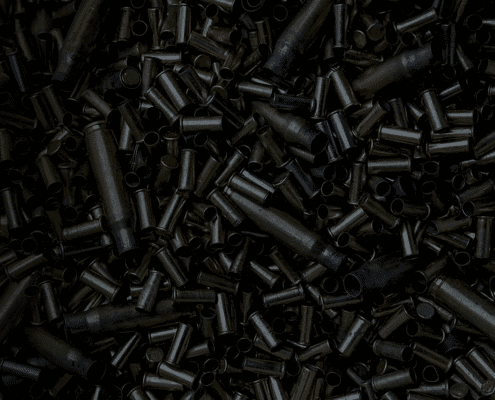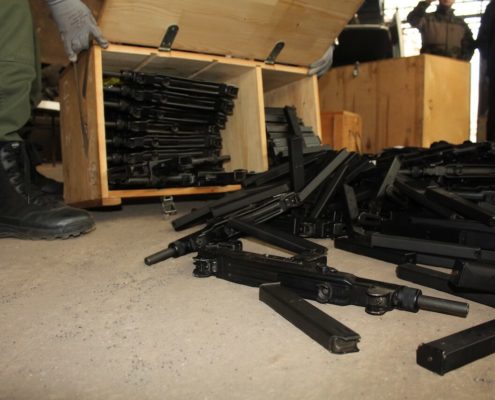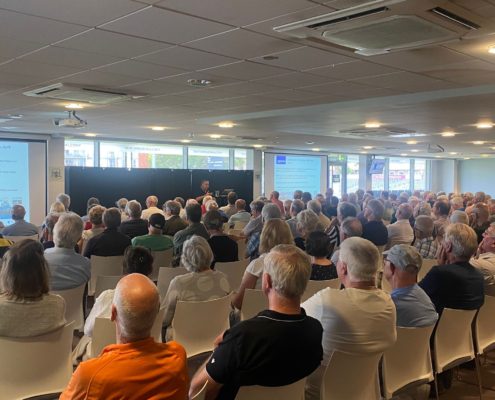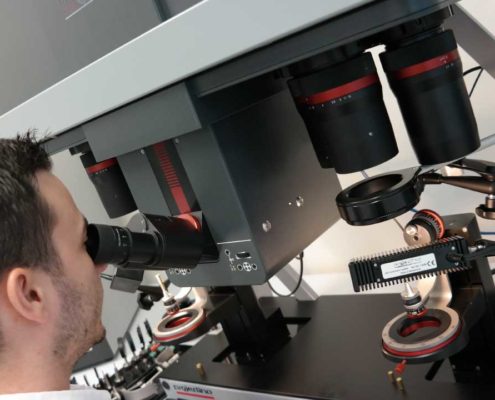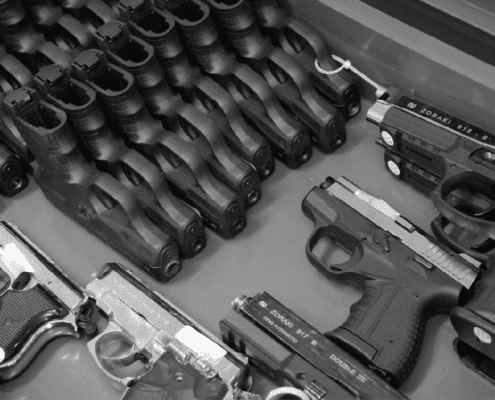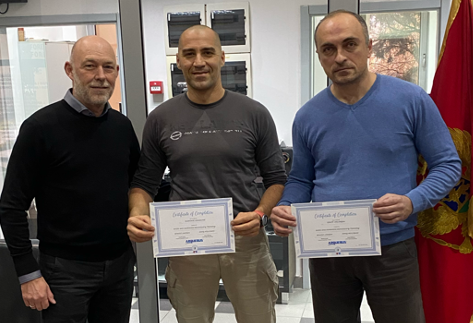 https://arquebus.uk/wp-content/uploads/2025/02/Picture-1-3.png
323
473
Rohan Harvey
https://arquebus.uk/wp-content/uploads/2022/02/Asset-1arquebus_logo.svg
Rohan Harvey2025-02-10 10:04:322025-02-10 15:23:07Arquebus Delivers Ballistic Examination Training in Montenegro
https://arquebus.uk/wp-content/uploads/2025/02/Picture-1-3.png
323
473
Rohan Harvey
https://arquebus.uk/wp-content/uploads/2022/02/Asset-1arquebus_logo.svg
Rohan Harvey2025-02-10 10:04:322025-02-10 15:23:07Arquebus Delivers Ballistic Examination Training in MontenegroInadequate Weapon and Ammunition Management (WAM) poses a significant challenge to peace, human security and development.
UNIDIR defines WAM as the “… oversight, accountability and management of arms and ammunition throughout their lifecycle, including establishment of frameworks, processes and practices for safe and secure materiel acquisition, stockpiling, transfers, tracing and disposal.” Crucially, WAM focuses upon conventional weapons and Small Arms and Light Weapons (SALW) under the “… jurisdiction of the state.”
There are many ways in which SALW can end up being misused in environments where the state is unable to fully control the accessibility to and illegal possession of arms. Thus, in contexts where governance is weak, the illicit proliferation of SALW often ensues.
The illicit proliferation of SALW undermines human security through enabling violent behaviour, strengthening the capabilities of armed groups, creating conditions which facilitate decline in the rule of law, displacing peoples, enabling human rights violations, and facilitating transnational organised crime such as human trafficking. Likewise, the misuse of SALW can also impact the delivery of humanitarian services, social cohesion, the protection of civilians and critical infrastructures, as well as detract from investment and economic growth.
SALW (particularly firearms) have subsequently been the subject of increased securitisation in recent years. Often tied up in discussions regarding Disarmament Demobilisation & Reintegration and Security Sector Reform, elements of WAM frequently feature in publications by organisations such as UNIDIR, The Small Arms Survey (SAS), The Flemish Peace Institute and SIPRI. The prominence of SALW and WAM in security discourse has also seen the development of new praxis in the form of international standards and guidelines such as the International Ammunition Technical Guidelines (IATG) and the Modular Small-Arms-Control Implementation Compendium (MOSAIC), in addition to a number of international and regional SALW control instruments.
WAM programmes have many facets, but some key focus areas include:
- Marking of SALW and Ammunition – Applying unique identifiers to material via methods such as stamping, laser engraving and the application of chemical taggants.
- Stockpile Management – Implementing robust physical security and safe storage practices.
- Record-keeping – Maintaining records of legal and illicit arms through utilising a state SALW registry and armoury accounting systems.
- Profiling and Tracing – Of SALW and ammunition to inform development of strategic and operational intelligence.
- Collection and Destruction – Of unwanted, illicit, obsolete or surplus SALW and ammunition.
Although advances in WAM programming have contributed toward progress in the reduction of global violent deaths on-year since 2016, SAS statistics indicate that 40% of reported violent deaths (211,000) were dealt by firearms in 2020: with UN statistics indicating that the majority occur in non-conflict zones. It is estimated that up to 4 times as many deaths occur indirectly due to the impacts of SALW misuse, whilst gender-security approaches confirm that although women constitute a minority of the victims of firearms homicide overall, they continue to suffer disproportionally from firearms violence.
National Registries are Vital
Understanding these ongoing challenges, Arquebus maintains that a crucial tool for sustained and expansive progress in minimising the impact of SALW misuse upon human security is an effective national firearms registry.
Firearms are durable and modular goods, which circulate in both civilian and state possession. Firearms can also easily be disassembled and re-assembled, can lie dormant for years before being misused, and are frequently smuggled and trafficked across international borders. Therefore, without accountability throughout the lifecycle of a firearm, or an accurate understanding of the firearms in circulation within a jurisdiction, other crucial elements of WAM such as marking, tracing and profiling, stockpile management and the collection and destruction of firearms are quickly undermined.
Research echoes our sentiment. A recent policy brief published by SIPRI in August 2022 stipulates that effective SALW control “… begins with effective and verifiable record-keeping”. The research found that as the UN Assistance Mission in Somalia did not quickly employ effective record-keeping, Government-marked weapons found on illicit black markets and captured from al-Shabab forces could be easily identified as government weapons, but they could not be traced back to their original users, units or locations to identify the mechanisms and circumstances of their diversion.
Evidently, it is critical that accurate and detailed records are maintained so that the relevant authorities can pinpoint a firearm’s location and trace its movements over time whilst fully understanding its characteristics at every step throughout its lifecycle. National state firearms registries thus underpin WAM efforts through providing a vital ‘single source of truth’ regarding firearms within a jurisdiction.
FireCycle
In pursuit of enhanced record-keeping, Arquebus has developed FireCycle: a firearms lifecycle management system that tracks each transactional step a firearm takes from its manufacture/import to its destruction/export. FireCycle acts as the conduit by which policing, and government organisations manage firearms throughout their lifecycle, regardless of if these firearms are held by individuals, or by a state institution.
FireCycle supports policing through registering recovered or seized firearms that have no legal status within a particular jurisdiction, providing authorities with a digital record of recovered/seized firearms and their corresponding locations via the geo-mapping tool. This allows authorities to search targeted regions by characteristics such as firearms type, make or model, manufacturer, calibre, action and country of origin. This facilitates identification of patterns of losses, recoveries and seizures, enabling the development of tactical and strategic intelligence which can aid authorities in tackling firearms criminality.
FireCycle integrates the Firearms Reference Table created by the Royal Canadian Mounted Police (RCMP), which provides over 104,000 template firearm makes and models to ensure accurate and consistent data entry. This covers the majority of SALW in circulation, however custom records can be added for materiel such as 40mm grenade launchers, recoilless rifles, anti-tank rockets and MANPAD missile systems if required.
The system is highly configurable to adapt to the contexts of individual jurisdictions. The software can be hosted on-premises but can also be deployed rapidly via the Cloud, with all required configuration achieved remotely during a project initiation phase. FireCycle is browser-based, with low hardware performance requirements, allowing users to utilise the system in the field or otherwise challenging environments.
In regard to WAM, FireCycle offers a comprehensive stockpile management and armoury system. Through multiple user accounts and role-based access, FireCycle allows multiple organisations in a jurisdiction to account for stocks, assigned and returned weapons, with total discretion between organisations if required. FireCycle is also specifically designed to accompany SALW control programmes. The system can automatically export firearms records in the iARMS format to trace firearms internationally. It can also underpin collection, marking, and destruction programmes through specifically designed transaction types, in addition to supporting test-fire programmes via linking legal test-fire data from Automated Ballistics Identification Systems to FireCycle.
Considerations Moving Forward
When designing and implementing national record-keeping systems, it is crucial to consider what the object of security, or who/ what we are trying to secure, is. Differing security focuses result in the prioritisation of certain risks and aims over others. For example, the UN’s WAM approach focuses upon record-keeping of state SALW, despite UN statistics indicating that only 18,000,000 (roughly 3%) of the 550,000,000 SALW in circulation today are in the possession of state forces.
Additionally, the ‘People, Technology and Processes’ which are required and available must also be considered. Our research and experience indicates that many SALW registries across the African and South American continents are paper-based and not fit-for-purpose, however many national authorities lack the necessary expertise, technology and resources to develop and deploy high-fidelity digital SALW accounting systems.
Although paper-based systems are undoubtedly better than no record-keeping system at all, they are liable to environmental damage, corruption and human error, whilst also being administratively burdensome to maintain. Digital systems are less prone to these drawbacks; however, some jurisdictions might not initially see the requirement for these benefits over a paper-based system.
In regard to international legal and political instruments, the UN Firearms Protocol mandates record keeping, but doesn’t specify which medium ought to be used. The UN Programme of Action and the International Tracing Instrument outlines common minimum standards for record keeping and maintenance of records, yet a review by UNIDIR in 2012 found that more than half of states party to the agreement don’t meet the recommended standards. Some regional SALW control instruments such as ECOWAS Convention have gone further by mandating a requirement for digital registries, but whether this standard will become more common across regions remains to be seen.




